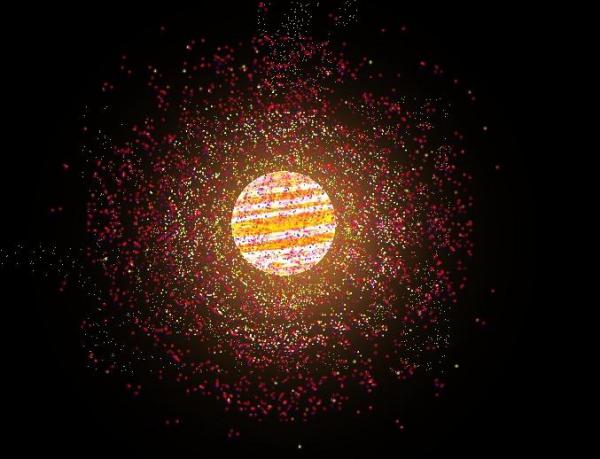BY LETTER
Matrioshka Micronode
Technology > Application > Infrastructure
Technology > Application > Megascale Engineering
Technology > Application > Power Generation
Technology > Application > Megascale Engineering
Technology > Application > Power Generation
 Image from Steve Bowers |
Micronodes are usually constructed by first introducing a stellification engine into a gas giant or brown dwarf and allowing it convert the body into a source of radiant energy. The various moons, asteroids, and ring materials orbiting the body are then reconstructed into multiple layers of orbiting processor elements in standard Matrioshka fashion. The resulting processing environment is used to run resource intensive simulations, provide computational support to the local polity or civilization, and support large populations of AI, upload, and a-life sophonts of various S-levels.
When preparing to build a micronode, care is taken to map the gravitational and orbital dynamics of the local system. Unlike a stellar class Matrioshka node, the completion of a micronode generally leaves a number of planets, companion stars, and other bodies extant in local space, any or all of which could disrupt or even damage the structure and elements of the node at some point in its future. To minimize or prevent such occurrences, micronodes are generally only placed in areas where it is deemed that future disruptions will be minimized. Further, since the future state of even the most stable seeming locale can only be predicted to a limited degree due to chaos effects, virtually all micronodes incorporate local and deep space monitoring systems, effector modules to shift smaller intrusive bodies into safe orbits, and maneuvering thrusters of various sorts in the structure of the node elements to avoid or correct for any disturbances that may occur. While standard Matrioshka nodes also certainly include such systems, micronodes tend to incorporate a much larger percentage of their overall mass (comparatively speaking) into these devices than their larger counterparts.
Related Articles
- Matrioshka Brain
- Matrioshka Hypernode
- Stellar Engineering - Text by M. Alan Kazlev
Modifying or customizing a star in any manner. Could be for the purposes of stellar husbandry, or for more exotic purposes. - Stellification Engine
Appears in Topics
Development Notes
Text by Todd Drashner
Initially published on 29 June 2009.
Initially published on 29 June 2009.






